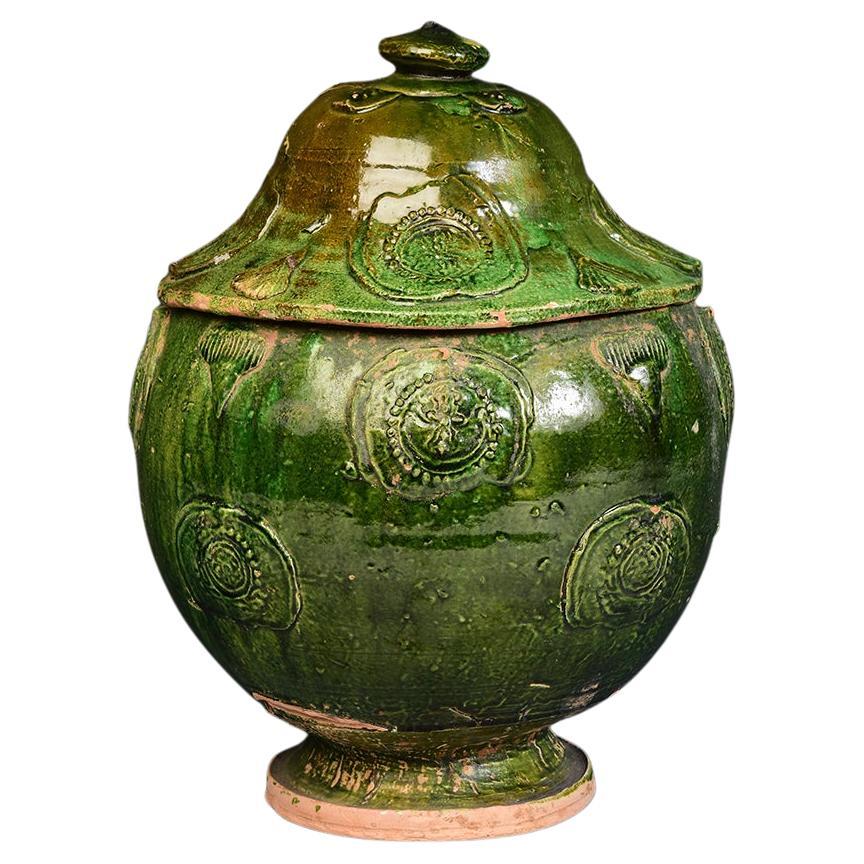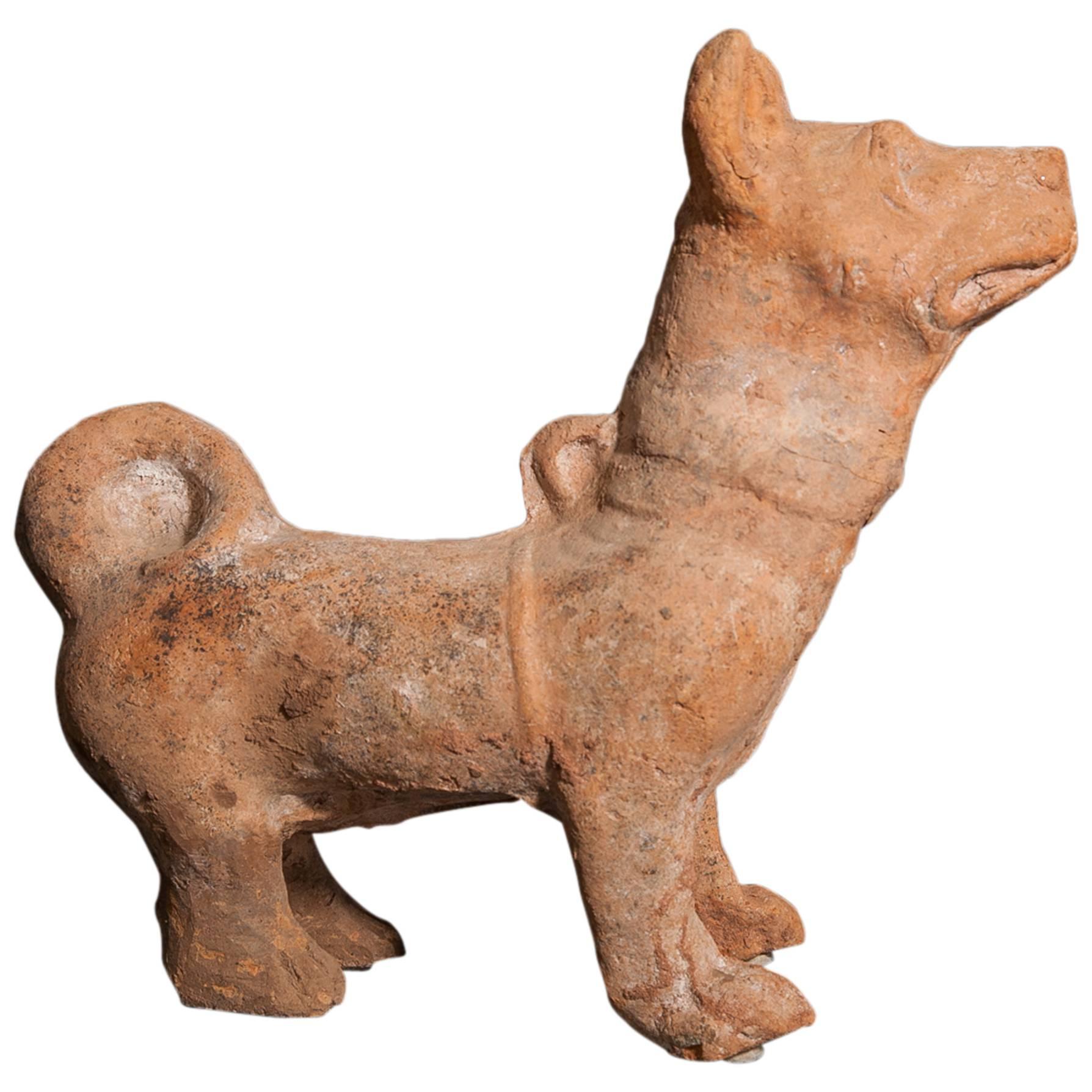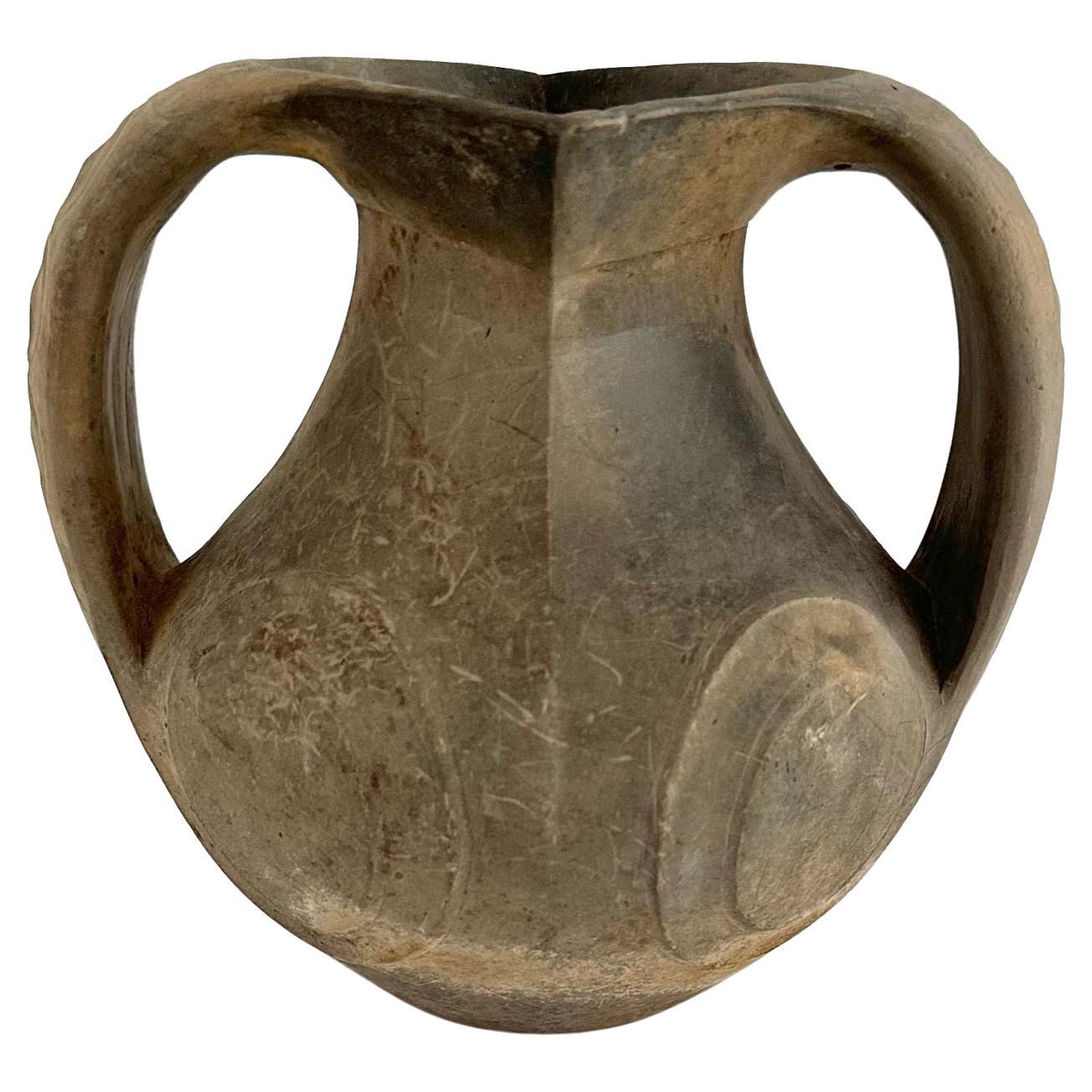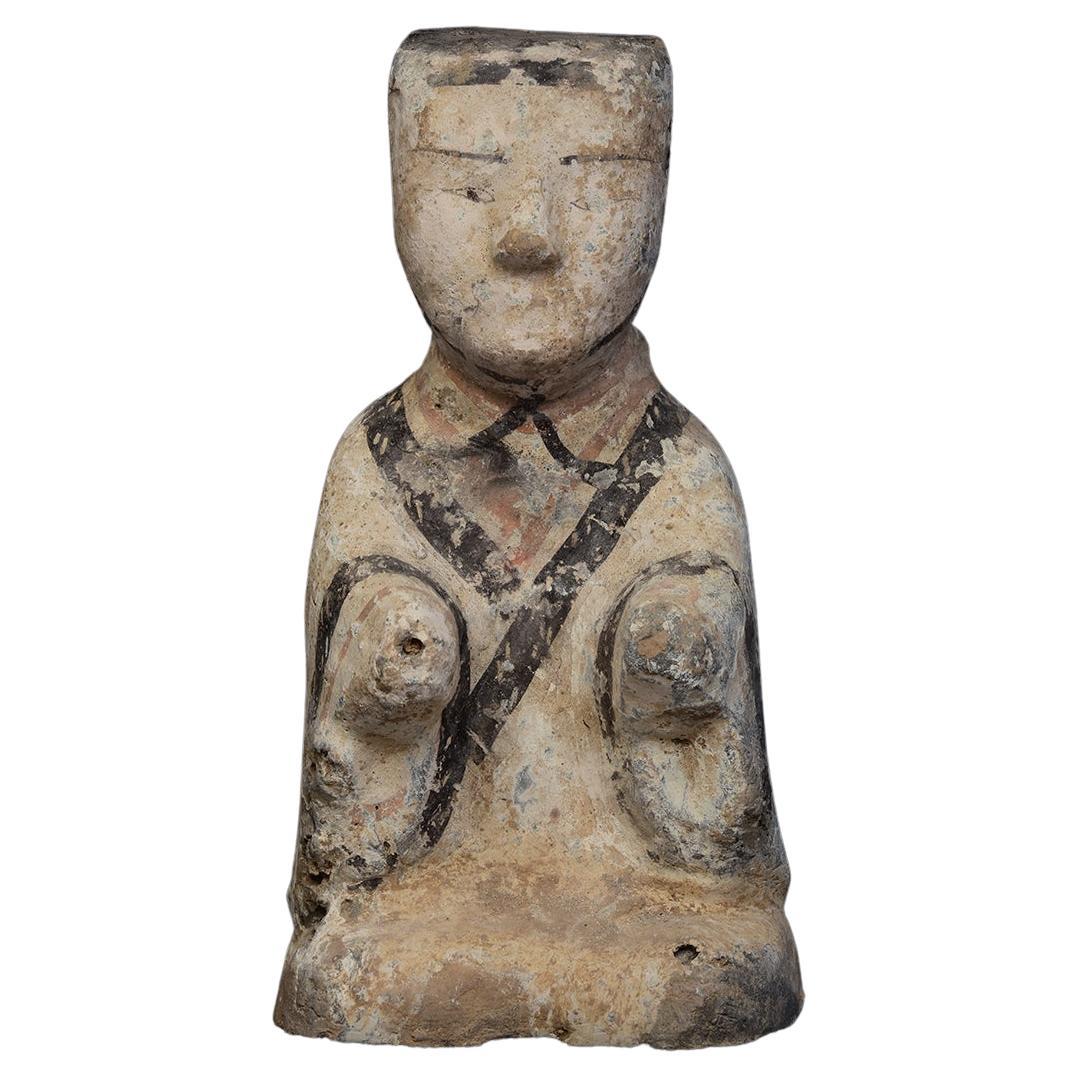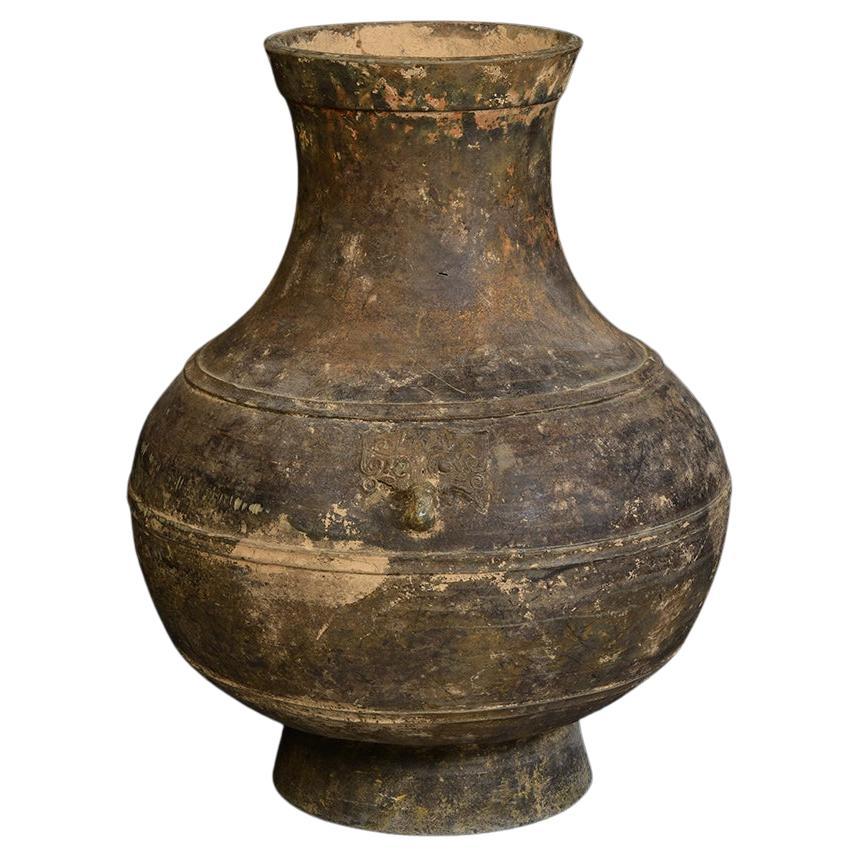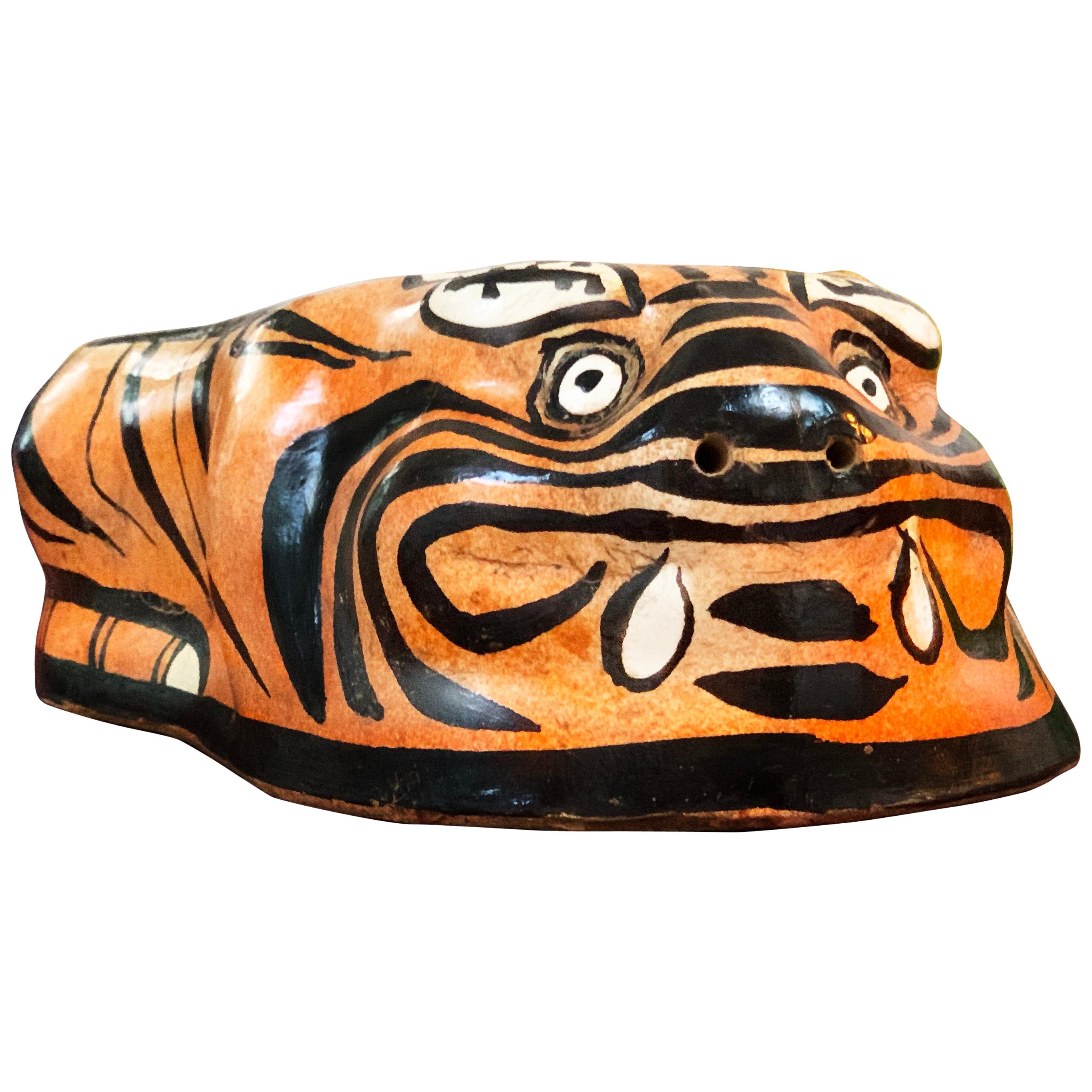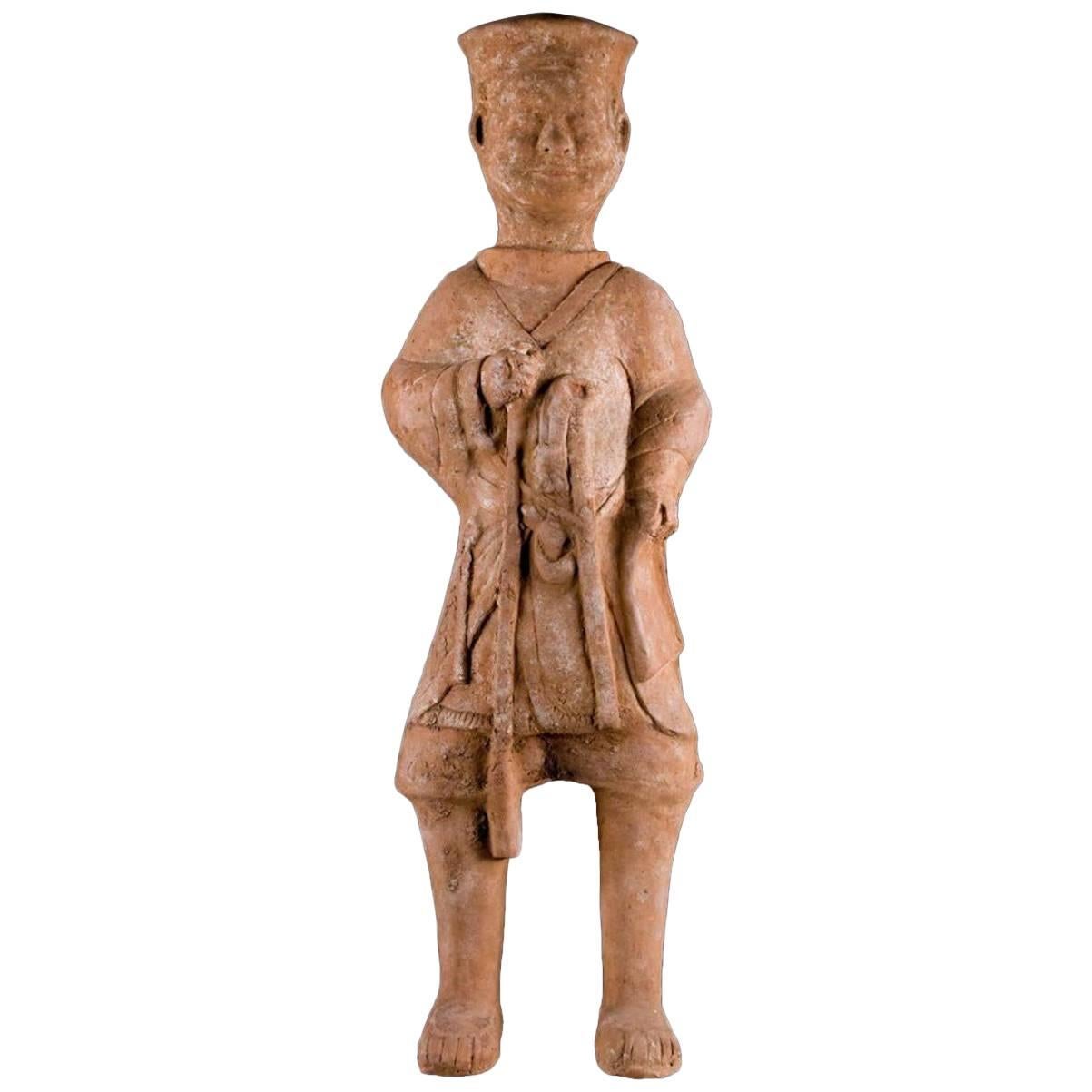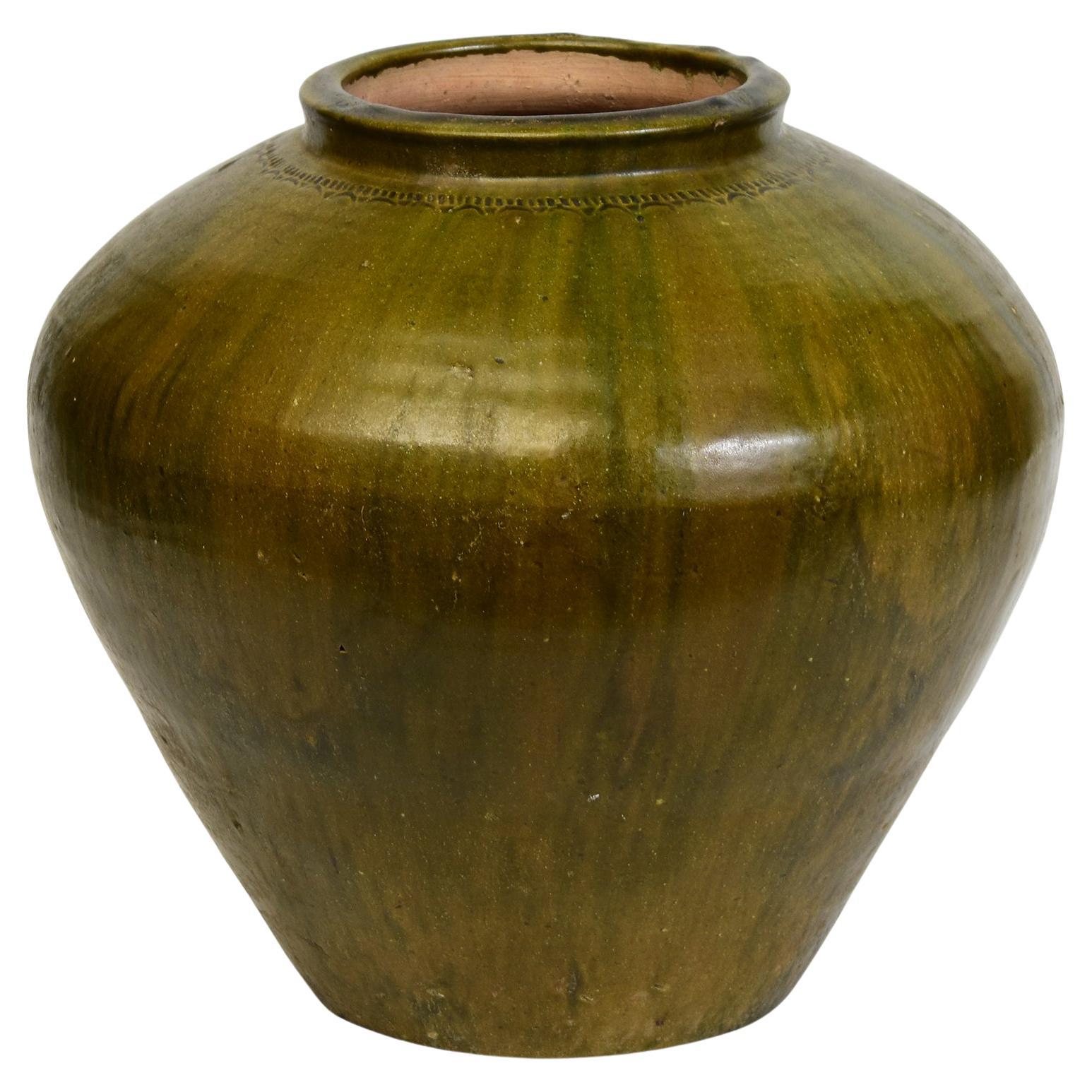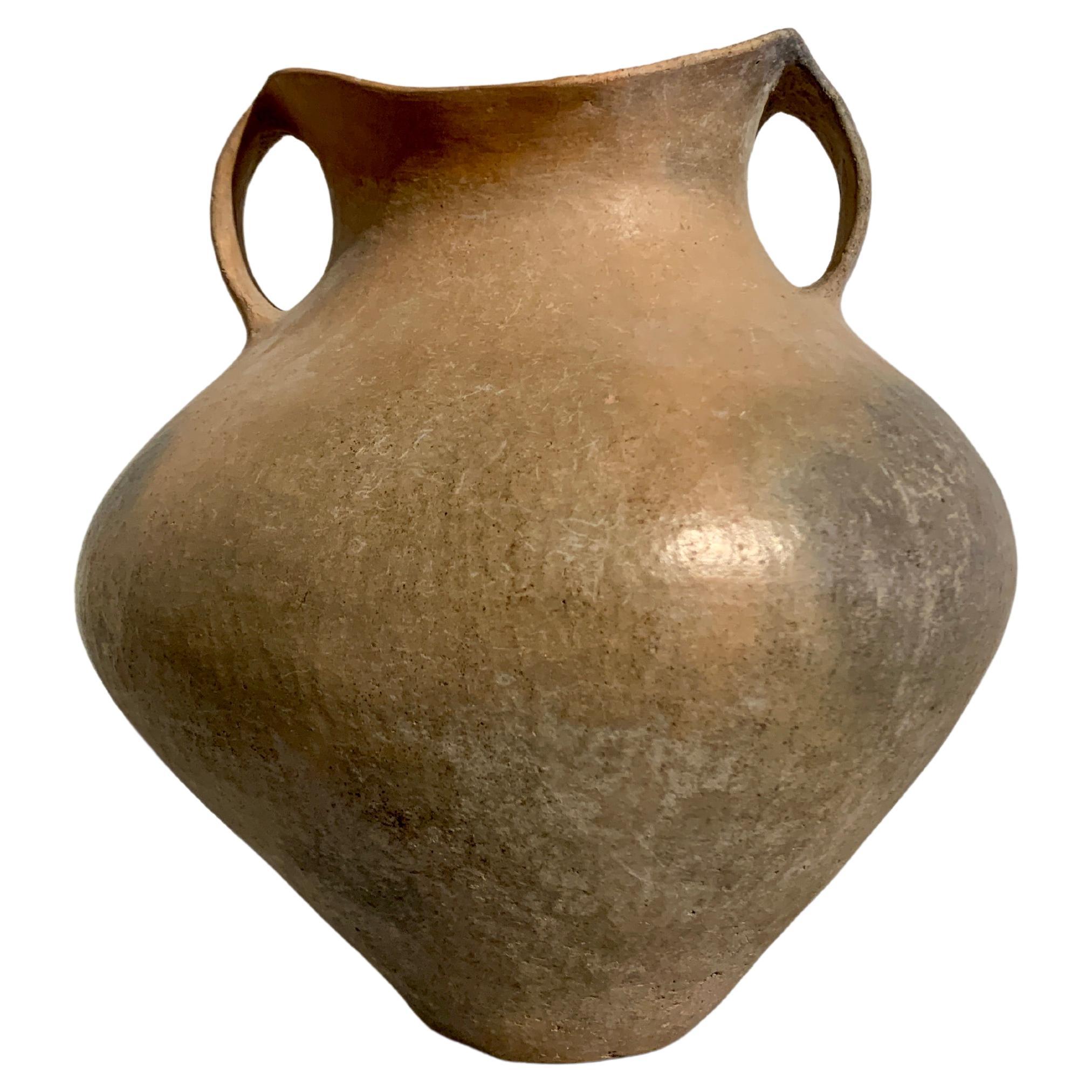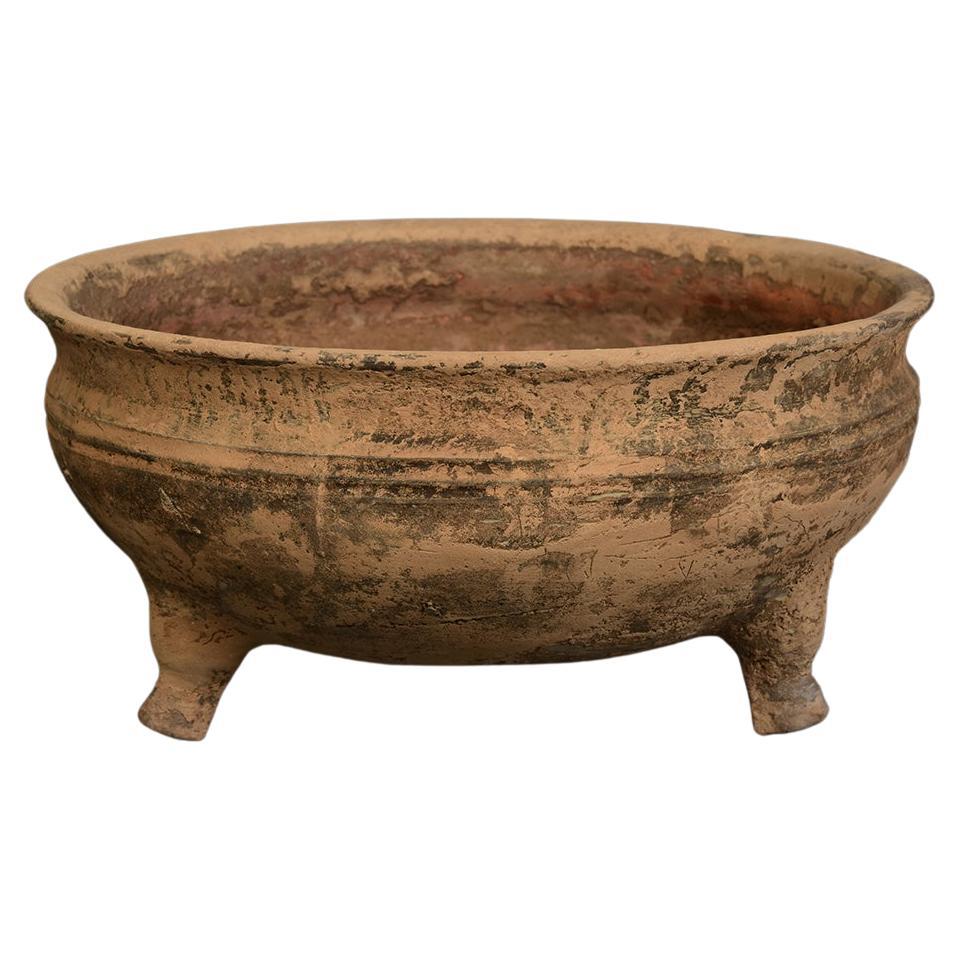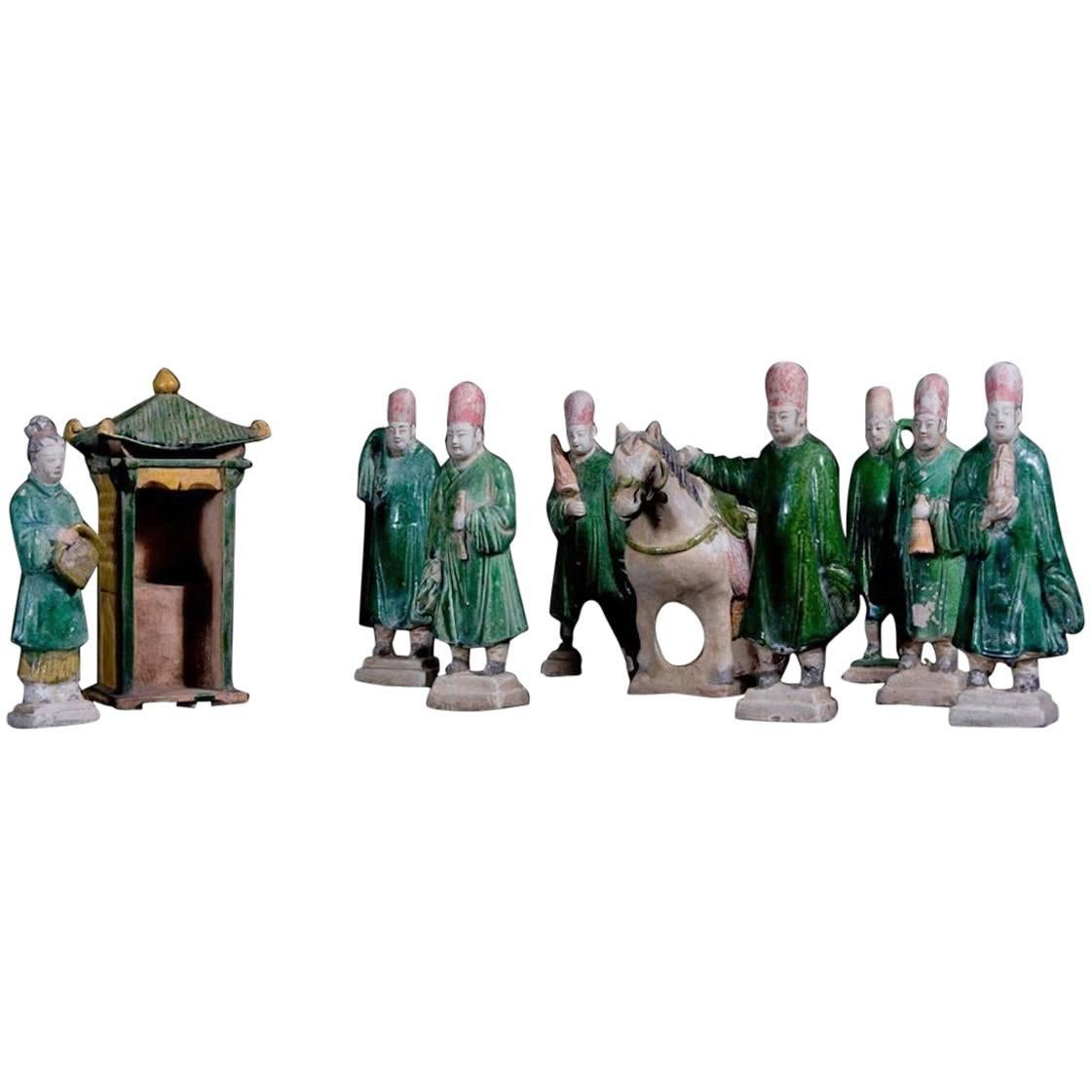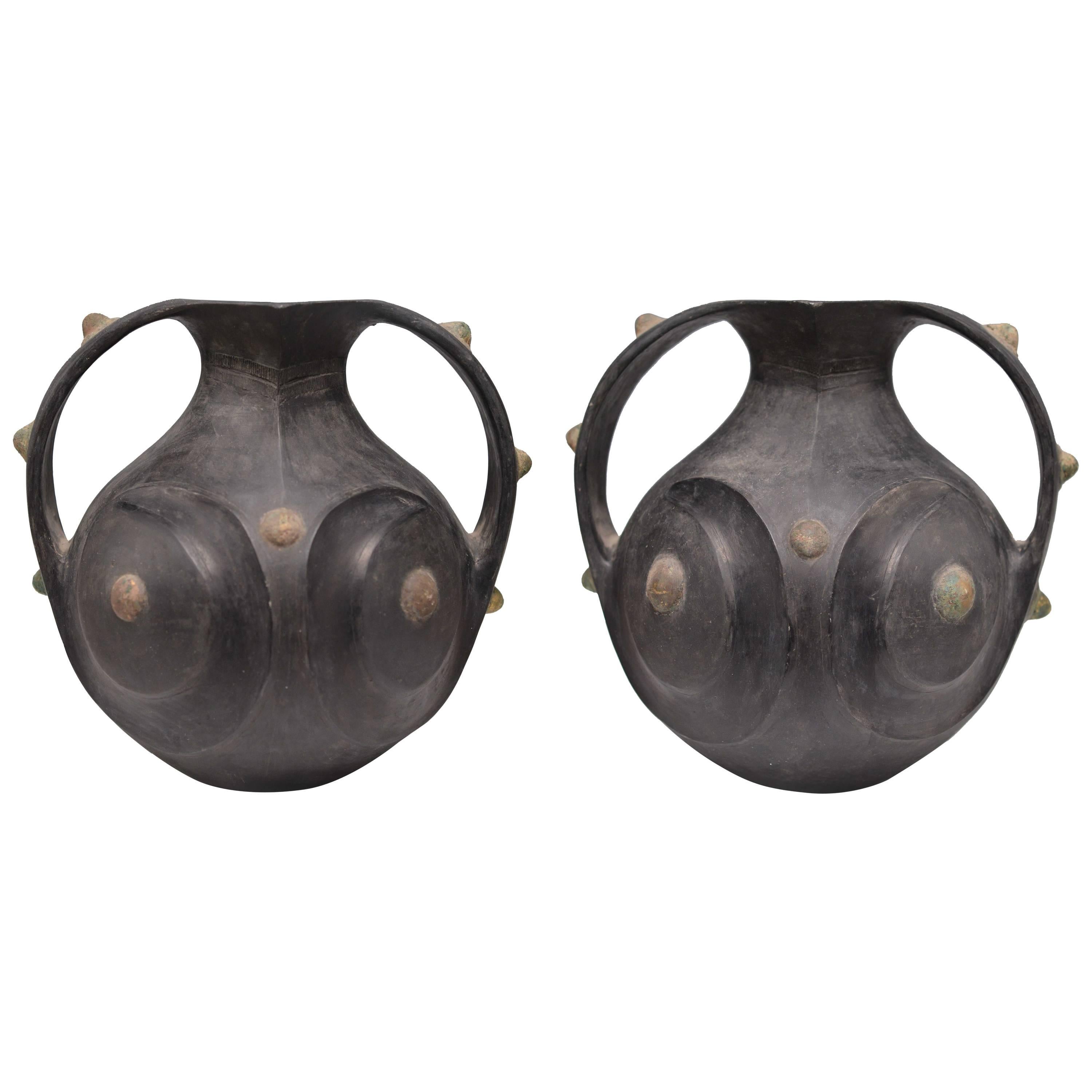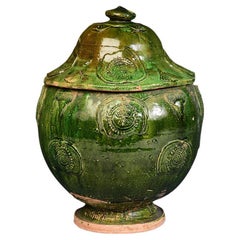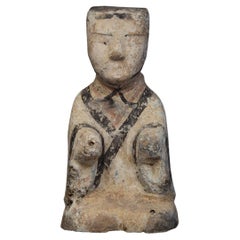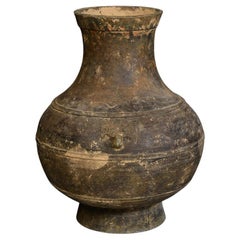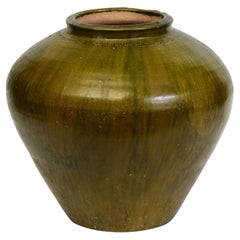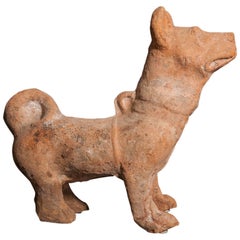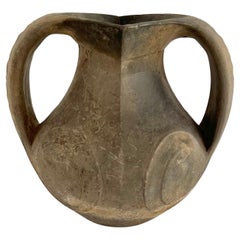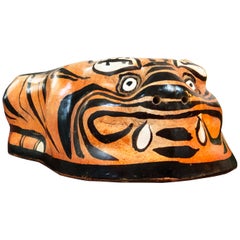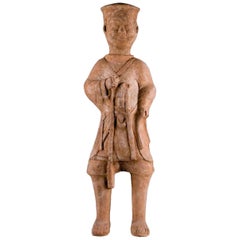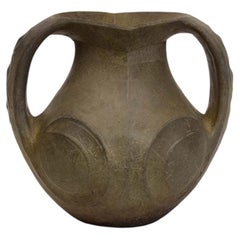
Han Dynasty, Antique Chinese Pottery Amphora
View Similar Items
Want more images or videos?
Request additional images or videos from the seller
1 of 13
Han Dynasty, Antique Chinese Pottery Amphora
About the Item
- Dimensions:Height: 6.58 in (16.7 cm)Diameter: 7.33 in (18.6 cm)
- Materials and Techniques:
- Place of Origin:
- Period:
- Date of Manufacture:206 B.C. - A.D. 220
- Condition:
- Seller Location:Sampantawong, TH
- Reference Number:Seller: DG111621-61stDibs: LU5730233143622
About the Seller
4.9
Platinum Seller
Premium sellers with a 4.7+ rating and 24-hour response times
Established in 2004
1stDibs seller since 2021
98 sales on 1stDibs
Typical response time: 10 hours
Authenticity Guarantee
In the unlikely event there’s an issue with an item’s authenticity, contact us within 1 year for a full refund. DetailsMoney-Back Guarantee
If your item is not as described, is damaged in transit, or does not arrive, contact us within 7 days for a full refund. Details24-Hour Cancellation
You have a 24-hour grace period in which to reconsider your purchase, with no questions asked.Vetted Professional Sellers
Our world-class sellers must adhere to strict standards for service and quality, maintaining the integrity of our listings.Price-Match Guarantee
If you find that a seller listed the same item for a lower price elsewhere, we’ll match it.Trusted Global Delivery
Our best-in-class carrier network provides specialized shipping options worldwide, including custom delivery.More From This Seller
View AllYuan Dynasty, Antique Chinese Green Glazed Pottery Covered Jar
Located in Sampantawong, TH
Chinese green glazed pottery covered jar.
Age: China, Yuan Dynasty, A.D. 1271 - 1368
Size: height 35 cm / width 25 cm.
Condition: Wel...
Category
Antique 15th Century and Earlier Chinese Antiquities
Materials
Pottery
$1,560 Sale Price
20% Off
Han Dynasty, Antique Chinese Pottery Attendant Figurine
Located in Sampantawong, TH
Chinese pottery attendant figurine.
Age: China, Han Dynasty, 206 B.C. - A.D. 220
Size: Height 22 C.M. / Width 12 C.M.
Condition: Well-preserved old burial condition overall.
100% s...
Category
Antique 15th Century and Earlier Chinese Antiquities
Materials
Pottery
$1,800 Sale Price
20% Off
Han Dynasty, Antique Chinese Pottery Hu Jar
Located in Sampantawong, TH
Chinese pottery Hu jar decorated with bands of raised lines and a pair of monster masks on the shoulder.
Age: China, Han Dynasty, 206 B.C. - A.D.220
Size: h...
Category
Antique 15th Century and Earlier Chinese Antiquities
Materials
Pottery
$2,800 Sale Price
20% Off
Han Dynasty, Antique Chinese Green Glazed Pottery Jar
Located in Sampantawong, TH
Antique Chinese green glazed pottery jar.
Lead glaze with copper is the main colorant used in Han period to produce green glaze.
Greenware b...
Category
Antique 15th Century and Earlier Chinese Antiquities
Materials
Pottery
Han Dynasty, Antique Chinese Pottery Bowl Support By Three Legs
Located in Sampantawong, TH
Chinese pottery bowl support by three legs.
Age: Chinese, Han Dynasty, B.C. 206 - A.D. 220
Size: Diameter 23.7 C.M. / Thickness 11.7 C.M.
Condition: Well-preserved old burial condit...
Category
Antique 15th Century and Earlier Chinese Antiquities
Materials
Pottery
$880 Sale Price
20% Off
Antique Chinese Neolithic Siwa Culture Pottery Amphora Jar
Located in Sampantawong, TH
Antique Chinese Neolithic Siwa culture pottery Amphora jar.
Age: China, Neolithic period, 1350 B.C.
Size: Height 15.6 C.M. / Width 13.3 C.M.
Condition: We...
Category
Antique 15th Century and Earlier Chinese Antiquities
Materials
Pottery
You May Also Like
Chinese Han Dynasty Terracotta Fighting Dog
Located in Hudson, NY
Chinese Han Dynasty Terracotta Fighting Dog. During the Han Dynasty (206 BC to 220 AD), terracotta dogs were placed at a grave site in order to protec...
Category
Antique 15th Century and Earlier Chinese Han Ceramics
Materials
Terracotta
Chinese Han Dynasty Amphora Pot
Located in Atlanta, GA
This amphora pot was made some 2,000 years ago during the Han Dynasty (206 BC - AD 220). This vase is pear form with a vertically incised band around the ...
Category
Antique 15th Century and Earlier Chinese Ceramics
Materials
Ceramic
Jin Dynasty Cizhou Ware Crouching Tiger Pottery Pillow, 12th-century, China
Located in Brooklyn, NY
Chinese Jin Dynasty 12th Century Cizhou Ware Crouching Tiger Pottery Pillow .Tiger pillow, Jin dynasty, 12th century (circa 1150)
The pillow is assembled ...
Category
Antique 15th Century and Earlier Chinese Ming Antiquities
Materials
Ceramic
$9,862 Sale Price
75% Off
Han Dynasty Standing Horse Trainer “Palafrenieri”
Located in San Pedro Garza Garcia, Nuevo Leon
Huge hollow molded terracotta, standing male figure wearing a hip-length multi-layered robe with a collared neck. Implements suspended from his waist, holding a staff in his right ha...
Category
Antique 15th Century and Earlier Han Antiquities
Materials
Terracotta
Chinese Siwa Culture Burnished Pottery Jar, 1500 - 1100 BC, China
Located in Austin, TX
A striking Chinese Neolithic to Bronze Age burnished red pottery double handled saddle mouth storage jar, Siwa Culture (circa 1500 to 1100 BC), modern day Gansu Province, China.
...
Category
Antique 15th Century and Earlier Chinese Ceramics
Materials
Pottery
Impressive Terracotta Funerary Procession - Ming Dynasty, China '1368-1644 AD'
Located in San Pedro Garza Garcia, Nuevo Leon
Impressive Funeral Ensamble of 10 Terracotta Glazed Figures in green and caramel colors depicting a votive procession with a palanquin, his four carriers, a horse, a stableman, two musicians, and an offering carrier.
This ensemble is accompanied by a Certificate of Authenticity, and Certificate of Expertise by Jean-Yves Nathan - Specialist in Asian Arts for the CEDEA (The European Confederation of Art Experts).
Burial figurines of graceful dancers, mystical beasts, and everyday objects reveal both how people in early China approached death and how they lived. Since people viewed the afterlife as an extension of worldly life, these figurines, called mingqi, sometimes referred as “spirit utensils” or “vessels of ghosts” disclose details of routine existence and provide insights into belief systems over a thousand-year period.
The Ming dynasty was the ruling dynasty of China – then known as the Empire of the Great Ming – for 276 years (1368–1644 AD). Founded by Chu Yuan-chang, the rebel leader that was successful in removing the mongols from the throne. Chinese control was re-asserted in China and eastern Asia. Literature became more important, schools were created, and the justice system was reformed. The Ming dynasty is described by some as "one of the greatest eras of orderly government and social stability in human history,” was the last imperial dynasty in China ruled by ethnic Han Chinese.
The practice of burying ceramic objects with the deceased went into decline from the 10th to the 14th Century AD. There was a revival in placing miniature representations of glazed terracotta objects such a furniture, food offerings, horses, miniature statues...
Category
Antique 15th Century and Earlier Chinese Ming Antiquities
Materials
Terracotta
Recently Viewed
View AllMore Ways To Browse
Wine Amphora
Han Dynasty Amphora
Tl Type
15th Century Oil Lamps
Afghanistan Robe
Antique Rooster Statue
Jade Tripod
Jingdezhen Teapot
Northern Wei Dynasty Painted Pottery
Robert Hatfield Ellsworth
Taiwan Red Coral
Burma Shan Period 16th Century
Han Cocoon Jar
Han Granary
Ming Dynasty Ewer
Northern Qi
Taiwan Natural Coral
Used Polo Saddle
